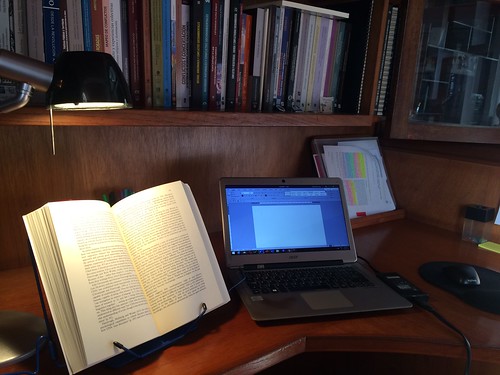I’ve taught a few workshops this year on academic writing and there’s always at least one attendee who has already completed their PhD and is looking for strategies to craft their book. Sometimes they’re looking to convert the PhD dissertation into a book, or write a new one. I promised those attendees I would write a thread & blog post on how you can use the same strategies I have developed to support graduate students to help you craft your book.
Here are a few ways in which you can use my Overview Devices, frameworks and workflows to write a book manuscript or to revise your dissertation with a view towards publishing it as a book.
Let me get something out of the way: I wrote a book-style dissertation from which I published one piece and which I am revising for publication as a book with a couple of additional chapters derived from recent fieldwork, archival work and interview materials. I have published books. I also supervise article-based PhD theses, and book-manuscript-style dissertations. I am familiar with the process and the processes that people follow to produce both.
With that clarification out of the way, here are a few strategies you can use to craft your new book or revise your dissertation into a book:
1. If it’s a new book or a book on a topic that you are new to, you may want to use my strategy to delve into an entirely new topic.
2. If you’ve surveyed the literature and have a good grasp of the empirical strategy you plan to use, you could then use my Expansive Framework to map the structure and outline the contents of your book.
3. Once you have a solid map of what your book is going to look like, you may want to use my three Overview Devices to help you draft the book proposal.
a) The Dissertation Two Pager (DTP) can summarize the book in a handy two pager.
b) The Dissertation Analytical Table (DAT) can help you structure the book chapters’ content and structure. You can increase the number of rows from 3 to the total number of chapters you plan to include in your book.
3. You can also use my methods to craft and map the Red Thread (the Throughline, the argument) of your entire book.
d) To map the Red Thread, I suggest that you use my third Overview Device, the Global Dissertation Narrative (GDN) method. Bonus: the DTP and the GDN will help you form the basis for your book proposal.
2 additional resources you may want to use to help you convert the dissertation into a book (or develop a new one):
– From Dissertation to Book by William M. Germano.
– The Book Proposal Book by Laura Portwood-Stacer
The techniques I listed in this thread work in tandem with these two books, which are excellent.
As a side note: let’s say that (like me) you’ve let your PhD dissertation rest and are now updating it to publish it as a book. This means you need to get caught up on the latest scholarship. To do this, I’ve developed two spreadsheet-based techniques to review the literature.
- The very popular Conceptual Synthesis Excel Dump (CSED, or Excel Dump, for short). In an Excel Dump you write all your notes about a paper, and sometimes you use it AFTER you have already read the entire manuscript
- The new Abstract Decomposition Matrix (ADM). The ADM is useful to decompose abstracts and allow you to do a rapid review of the literature. The ADM also helps you visualize where your theoretical, empirical or methodological contribution will lie.
The difference between a CSED and an ADM lies in that the ADM is for a quick skim of a large number of abstracts whereas the CSED holds the entirety of the literature reviewed. In a sense, one could do an ADM first and then select articles to read more in depth and dump them into a CSED.
Now, let’s say that you’ve submitted your book manuscript to the publisher, it’s been peer-reviewed and you need to craft revisions to each book chapter. My Drafts Review Matrix (DRM) can help you plan how you’ll tackle those revisions.
To organize your time and create a timeline for when you need to get each chapter revised, you may want to apply backcasting techniques, coupled with a trusty Gantt Chart.
Obviously, in the case of a book manuscript, you need to backcast the entire book AND each chapter. Here is my process for backcasting an entire project.
TL;DR: you can, in fact, use the strategies I’ve developed to support graduate and undergraduate students to help you revise your dissertation into a book and/or write a new book.
I hope this blog post is useful to all of you book writers/revisers out there.




0 Responses
Stay in touch with the conversation, subscribe to the RSS feed for comments on this post.